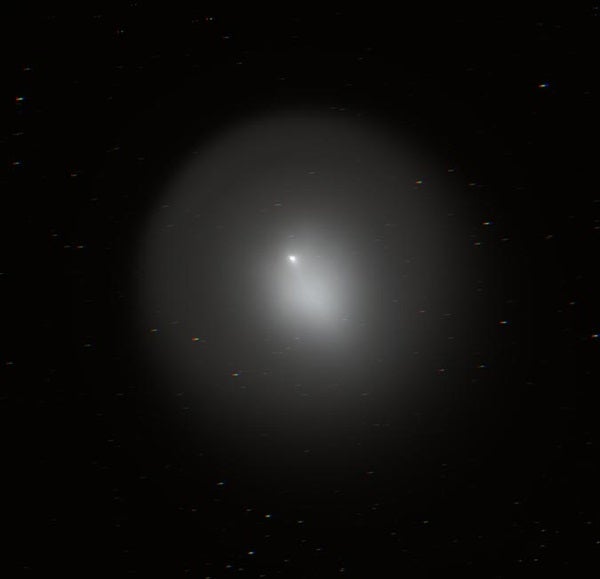In late October, Holmes brightened by a factor of about one million times when it ejected a vast cloud of dust and gas. That cloud expanded over time and now spans more than 870,000 miles, making it larger than the Sun (which is 865,000 miles in diameter).
On November 4, Smithsonian scientists snapped this photo of Comet Holmes using an instrument called Megacam, which is one of the largest CCD cameras in existence. Megacam holds 36 nine-megapixel CCD chips, for a total of more than 300 megapixels.
Separate exposures through three color filters were combined to make this final, full-color image. Individual stars appear as a line of colored dots because the photos were centered on the comet, which moved slightly across the sky.
Currently, Comet Holmes has a total brightness of 3rd magnitude, however its large size on the sky (and resulting low surface brightness) makes it difficult to see without binoculars or a telescope. However, when it was discovered in 1892 it underwent a second bright outburst five months after the first. If Holmes repeats its historical performance, then this comet may offer viewers one more chance to see the show before it bows from the stage.










